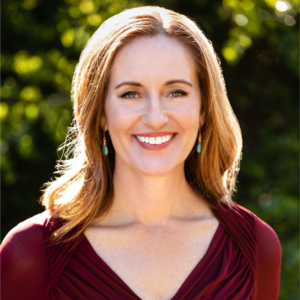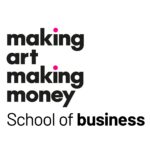How can an artist find their niche?
How can artist find their niche?
What is The 4-Part Code about?
Ann Rea: 00:03 We all want to make money. And is there anything more inspiring than getting paid for something that you’ve created? For me, it invigorates my creativity. It makes me want to create and serve more. And so the challenge is a lot of artists just don’t know where to start when it comes to understanding who their niche is and so they’re making art in your mind for everyone. But really when you make art for everyone, you make art for no one, least of all yourself.
How does The 4-Part Code work?
Ann Rea: 00:36 You really want to determine who is your tribe, who is your niche. And there is a process that I teach in the program and it’s called The 4-Part Code. And it is a process and it starts with knowing your creative purpose, knowing your Why.
How did you discover The 4-Part Code?
Ann Rea: 00:56 I want to tell you a little story. When I was in art school, I was really stymied by trying to understand why one artist landed in the art history books and another did not. And no art historian could tell me that they couldn’t give me the answer and neither can art critics. But when I actually did a deep dive into art history and into luxury marketing, then I got it. Then I cracked the code, and that’s what I refer to as The 4-Part Code.
What makes artists successful?
Ann Rea: 01:31 The only reason an artist winds up in the art history books or on Netflix nowadays or wherever, it’s because they at some point in time provided value for a target market. Right now, a lot of artists might provide value. The only reason they actually became so successful is because they not only just created art, they created value above and beyond their art.
What inspires successful artists?
Ann Rea: 02:07 What motivated them to create value above and beyond their art? Well, they were on a mission. They were dedicated passionately to a problem that they wanted to solve and that didn’t have anything really directly related to their art. Now, why were they on a mission? Why were they so passionate about serving this greater mission, a mission greater than themselves? Because they knew their Why?
Where must you start?
Ann Rea: 02:37 So if you’ll notice what I did was I just deconstructed The 4-Part Code in four steps. But what I did was I started with the end, right? Meaning I started discussing the target market, the people who were benefiting from this offering. The artist has created. But as you, as an artist, you’re probably asking yourself, who wants to buy my art? Where do I find collectors? Who wants to buy my art? Where can I find more collectors? Where can I find any collectors? But that’s not where you want to start.
Ann Rea: 03:16 Not Simon Senik’s “Find Your Why.”
Ann Rea: 03:20 You start by understanding and uncovering your Why, your purpose that has everything to do with you. It’s got nothing to do with your art. But that’s step number one. Once you know your purpose, and if this is not Simon Senik, Find Your Why. I find, I mean I’m glad that he was bestseller, but he does not tell you how to find your why he just keeps telling you, find your why. Find your why, but he doesn’t tell you how. So I got very annoyed at this constant droning of find your why. And I developed a 28 day process to allow people to find their why in less than five minutes a day. And it’s incredibly powerful and transforming. Once you know your Why, who you are, what you stand for, and what you stand against, then you know your mission. You know what you’re born to do here, and that’s step two.
What is step #3? How?
Ann Rea: 04:23 Then you have to figure out, well, how, how can I create clear value above and beyond my art in service to this greater mission? That’s step three.
What is step #4, Who?
Ann Rea: 04:38 Number four, who has this problem and who could also afford to buy art?
Ann Rea: 04:47 Art is luxury.
Ann Rea: 04:47 I talked about the intersection of art, history and luxury marketing, right? And that’s how I developed The 4-Part Code. Art is a luxury, so you are kidding yourself if you think it’s anything other than luxury, we don’t actually need art. Now that’s a debate. You can debate that philosophically all day long. I’m just talking about the pure economic definition of need, which is food and shelter, some basic transportation and clothing and that’s it. After that we’re getting into fancy land.
What do people need?
Ann Rea: 05:29 In order for you to compete as an artist, no one’s going to need, no one’s going to feel that they need art because they don’t, but what they may need is how you serve that greater mission. Let me tell you a little something about the luxury market. I’m also a student of a luxury market after if you’re an artist who was doing well and then the great recession hit in the mid two thousands a lot of artists really took hit and their sales declined. Also, a lot of art galleries went out of business and the way that affluent in the United States, Canada, Australia, and the UK and Europe decided to spend their luxury dollars fundamentally changed. And if you did not make that change, you were probably left behind.
An artist’s product is emotion.
Ann Rea: 06:23 Most affluent art collectors in the United States, Canada, the UK, Australia grew up middle class or lower working middle class. Right. So you haven’t more common than you think and they are looking for meaning. True heartfelt meaning you’re not selling goods or services as an artist, you’re selling emotion. That’s actually your product.
Is an artist’s success just luck?
Ann Rea: 06:52 No, it isn’t sheer luck. And it isn’t a mystery about why one artist becomes successful and why another artist doesn’t. It’s a predictable pattern.
What’s the good news?
Ann Rea: 07:07 And here’s the good news. It’s something that you can learn. You can learn how to crack your 4-Part Code and you can learn that you’re not in the business of selling goods or services, but you’re actually selling emotion. And hopefully that’ll take some of the frustration away from some artists who’ve tried to use conventional business plans and conventional marketing plans and found it didn’t work. Guess what? That’s why it didn’t work. Because they’re designed to sell goods or services. We have several MBAs in the Making Art Making Money program. We even have a, we had a Harvard MBA who, um, actually focused on marketing. She couldn’t figure out how to sell her art and she’ll, she went through the program, understood her 4-Part Code and understood that her real product was emotion. So I just want to give you a little sign of hope. This is something that you can learn.
What’s the bottom line?
Ann Rea: 08:03 The big takeaway here is if you want to sell your art, if you want to sell anything, you have to create clear value and you have to know who actually perceives it as valuable. Without that understanding, you’re really engaged in a very expensive hobby.

Ann Rea, Fine Artist & Mentor
Ann Rea is a San Francisco-based fine artist. She created Making Art Making Money™, the leading and most reputable business program for fine artists since 2005. Rea’s art and business savvy have been featured on ABC, HGTV, Creative Live, The Good Life Project, in the book Career Renegade by Jonathan Fields, the San Francisco Chronicle, Art Business News, Fortune, and Inc. Magazines. Rea’s artistic talent was commended by her mentor, art icon Wayne Thiebaud.

Just when the article got me interested it was over. So how do I truly start knowing myself? Do you have any recommendations?
Hello Gregor,
If I could help you start to truly know yourself in the space of this tiny rectangle, I would.
However, it is a process and I teach this in my program. https://makingartmakingmoney.com